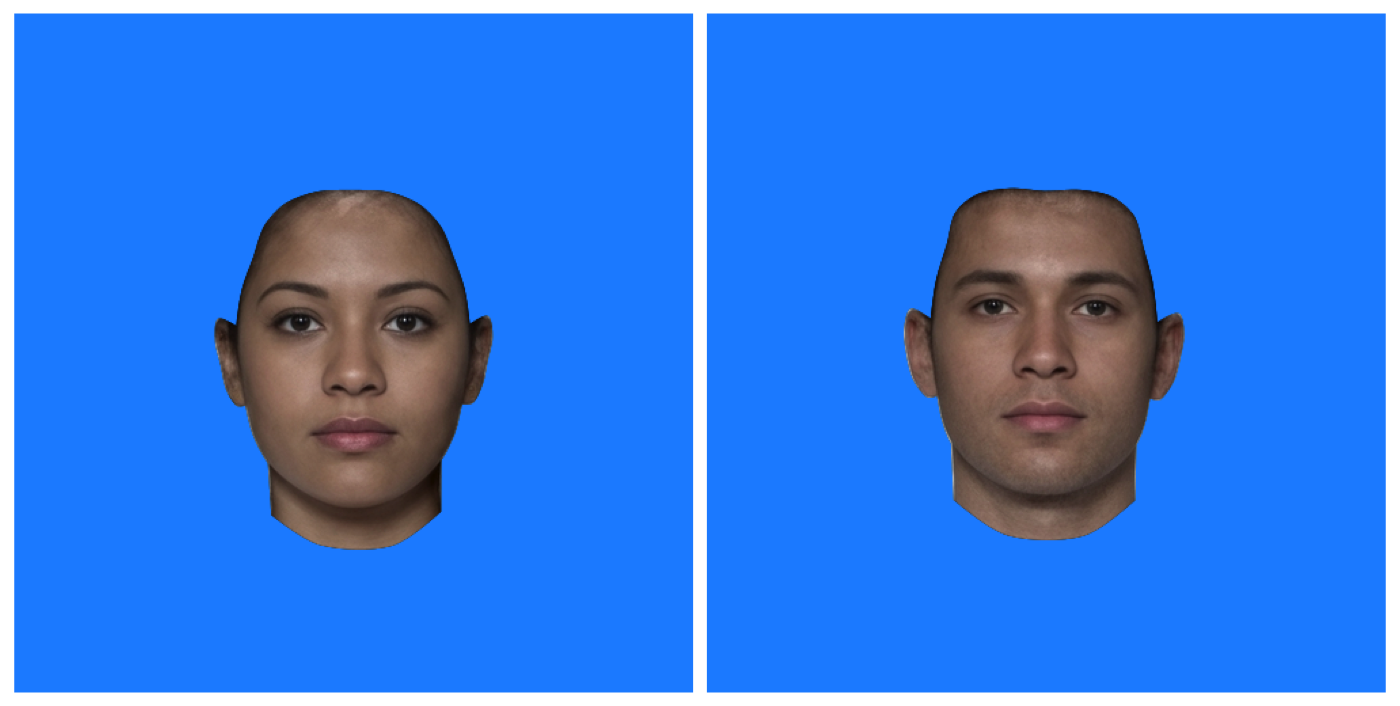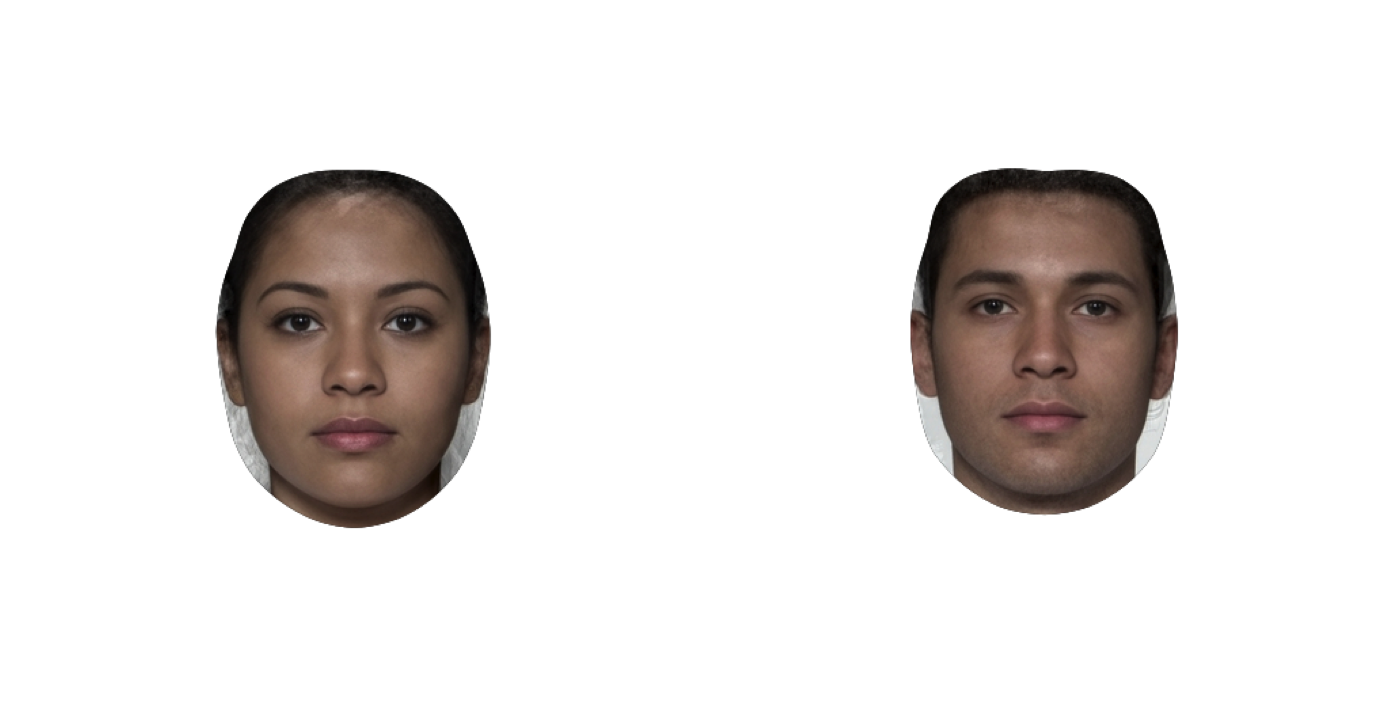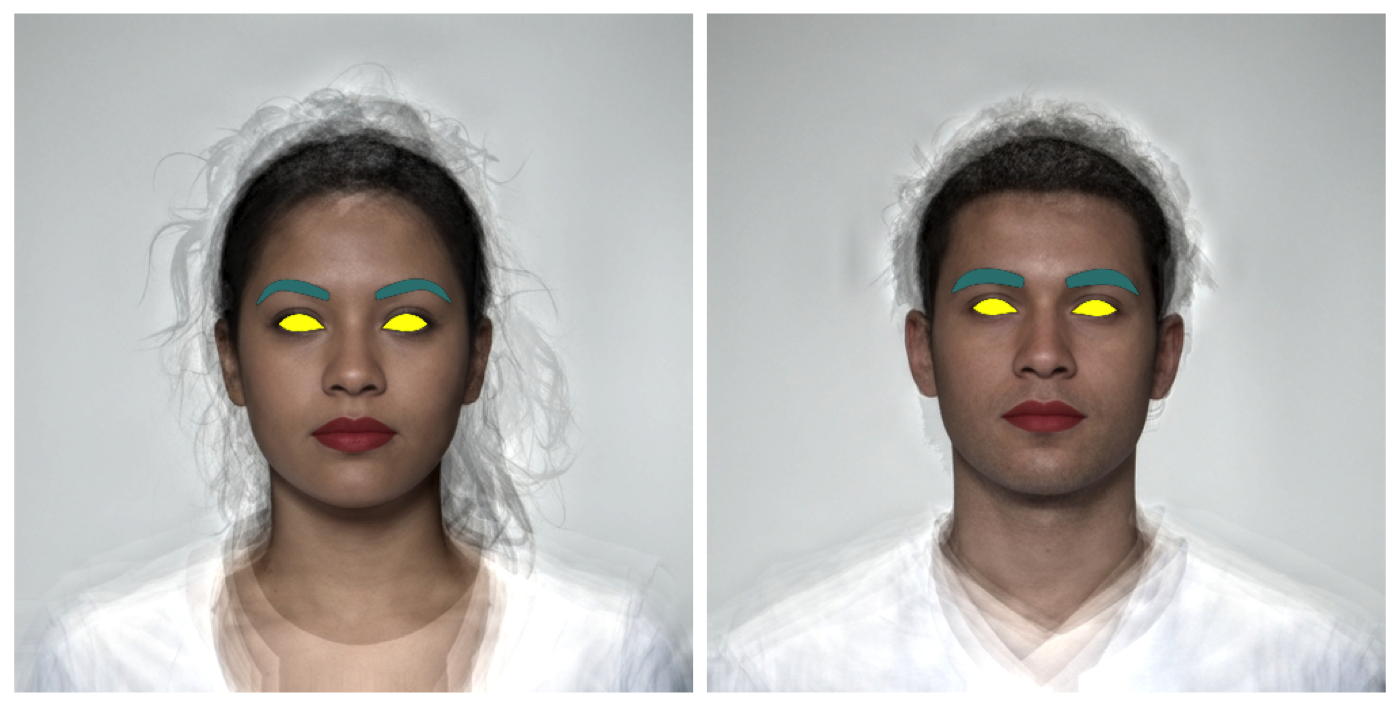Use template points to define the borders of a mask to apply to the images. The image outside of the mask (or inside, if reverse = TRUE) is replaced by the fill color.
Usage
mask(
stimuli,
mask = "face",
fill = wm_opts("fill"),
reverse = FALSE,
expand = 1,
tem_id = "frl"
)Arguments
- stimuli
list of stimuli
- mask
vector of masks or a custom list of template points
- fill
color to make the mask, see
color_conv()- reverse
logical; whether the mask covers the areas outside (FALSE) or inside (TRUE) the mask
- expand
how many pixels to expand the mask (negative numbers contract the mask)
- tem_id
template ID to pass on to
tem_def()to get built-in mask definitions
Details
For FRL templates, the argument mask can be a vector with one or more of the following: oval, face, neck, ears (left_ear, right_ear), eyes (left_eye, right_eye), brows (left_brow, right_brow), mouth, teeth, nose.
For Face++ templates (fpp83 or fpp106), the argument mask can be a vector with one or more of the following: face, eyes (left_eye, right_eye), brows (left_brow, right_brow), mouth, teeth, nose. Because these templates have no forehead points, "face" is usually disappointing.
Set custom masks using the template points (0-based). View an image with labelled templates using plot(stim, pt.plot = TRUE, pt.shape="index"). Separate points along a line with commas, line segments with semicolons, and mask areas with colons. For example, this would be the custom mask for the eyes in the fpp83 template:
"44,4,56,51,79;79,58,11,25,44:61,67,38,34,40;40,41,17,47,61"
If you set expand = 0, there is sometimes a thin visible line where multiple components of the mask touch.
Examples
stimuli <- demo_stim()
mask(stimuli,
mask = c("face", "neck", "ears"),
fill = "dodgerblue")
 mask(stimuli, "face", expand = 30)
mask(stimuli, "face", expand = 30)
 # \donttest{
# reverse masking masks over the features
stimuli |>
mask("eyes", "#FFFF00", TRUE) |>
mask("brows", rgb(0.2, 0.5, 0.5), TRUE) |>
mask("mouth", "#FF000066", TRUE)
# \donttest{
# reverse masking masks over the features
stimuli |>
mask("eyes", "#FFFF00", TRUE) |>
mask("brows", rgb(0.2, 0.5, 0.5), TRUE) |>
mask("mouth", "#FF000066", TRUE)
 # custom mask (list style)
fpp83_eyes <- list(
left_eye = list(
c(44,4,56,51,79),
c(79,58,11,25,44)
),
right_eye = list(
c(61,67,38,34,40),
c(40,41,17,47,61)
)
)
demo_tems("fpp83") |>
mask(fpp83_eyes, fill = color_conv("dodgerblue", alpha = 0.5))
# custom mask (list style)
fpp83_eyes <- list(
left_eye = list(
c(44,4,56,51,79),
c(79,58,11,25,44)
),
right_eye = list(
c(61,67,38,34,40),
c(40,41,17,47,61)
)
)
demo_tems("fpp83") |>
mask(fpp83_eyes, fill = color_conv("dodgerblue", alpha = 0.5))
 # }
# }
